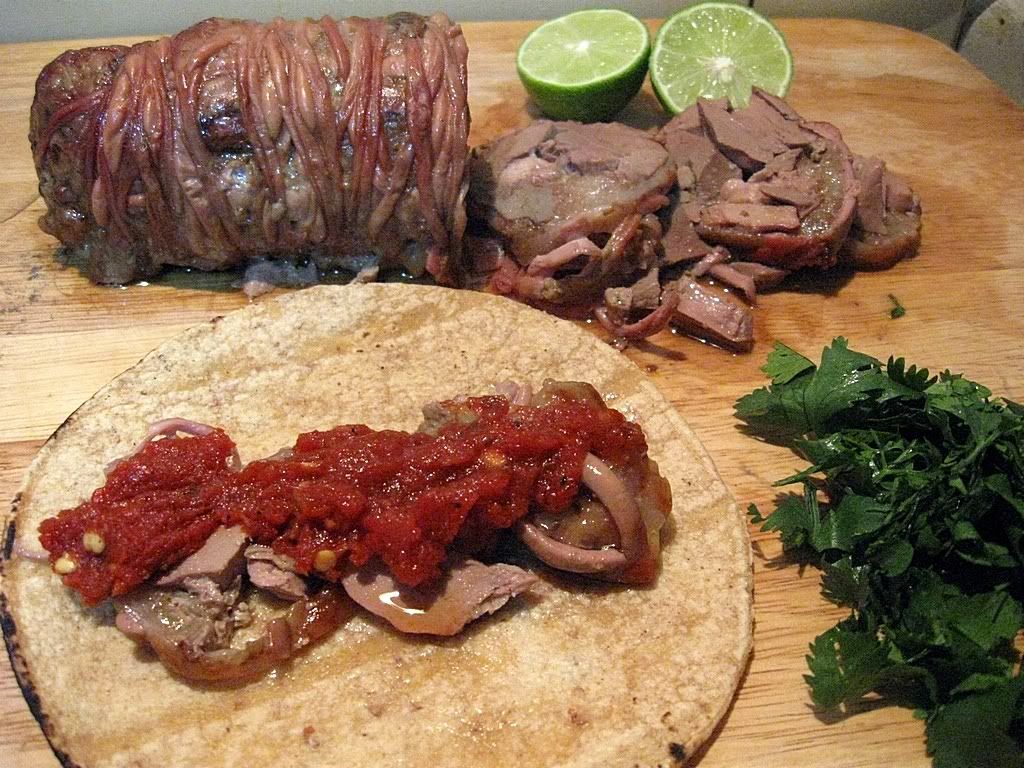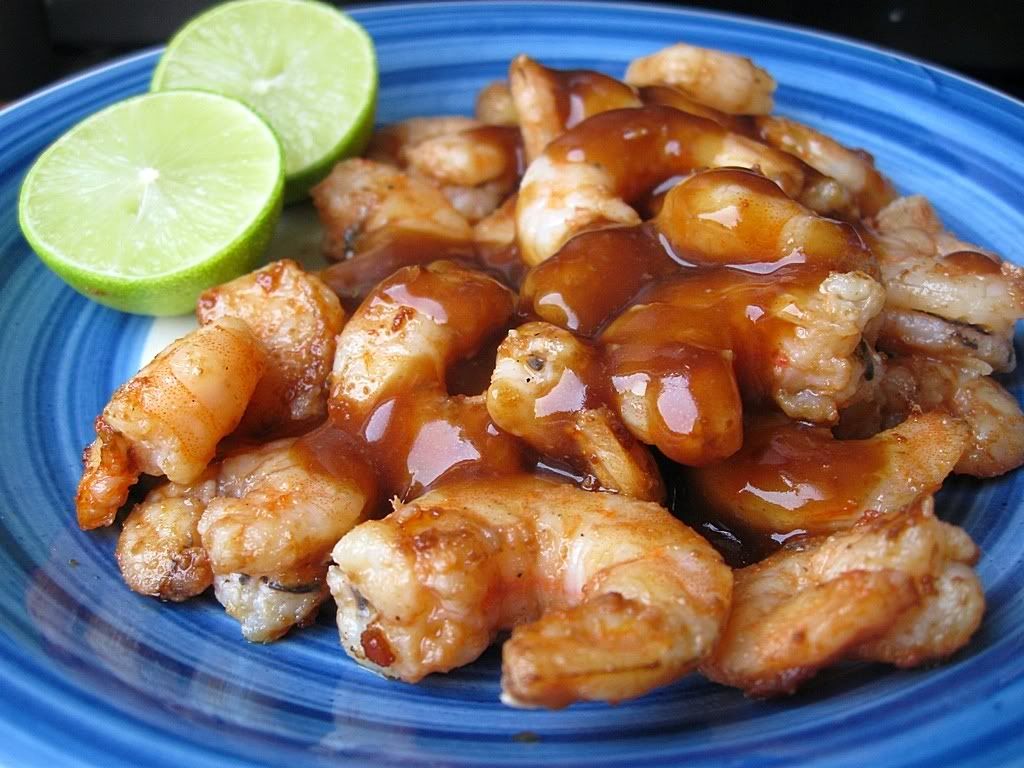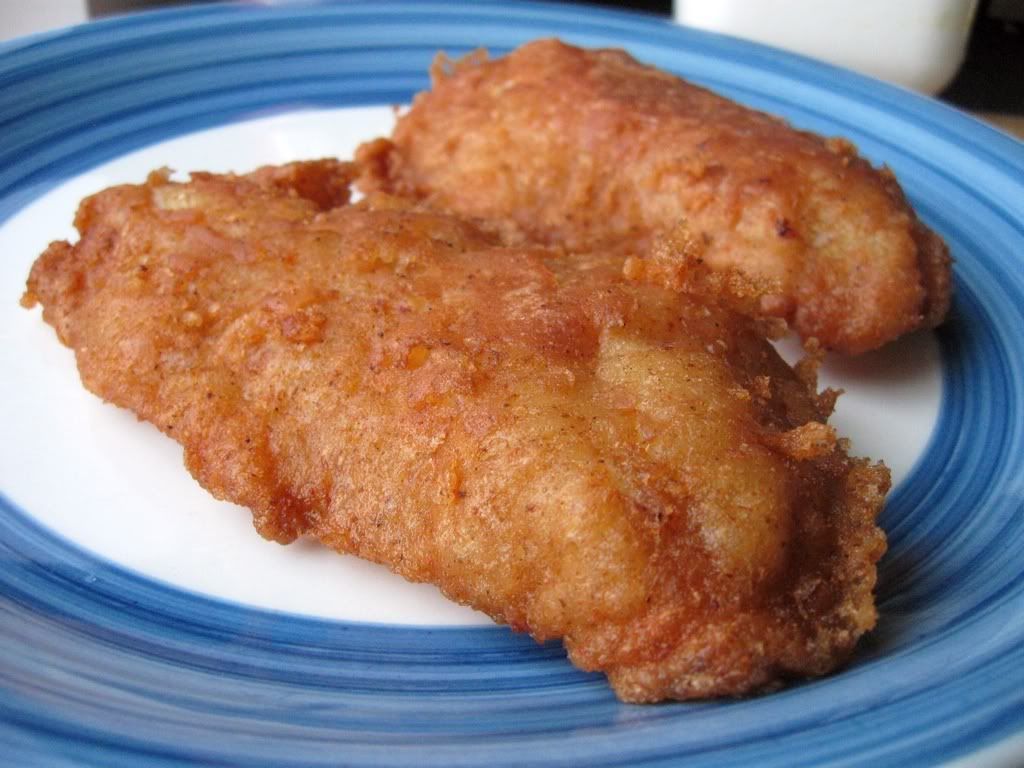-
Posts
1,032 -
Joined
-
Last visited
Content Type
Profiles
Forums
Store
Help Articles
Posts posted by Dakki
-
-
I bet this is a silly question but I'll ask anyway: Do you get better results taking the photo at the camera's highest resolution, doing post at that resolution and then shrinking for uploading or by taking the photo at something close to the final size and doing post at that resolution?
-
No dishwasher here either. I like spatter screens. They do get gunky after a while but I guess you could run them in the oven's self-cleaning cycle if you care about that (and if they're all metal).
Are you using batter, flour? Cornstarch gets very crisp and brown quickly, good for calamari and such, not so much for chicken.
So you just rinse the spatter screen in soapy water and don't get all hyper about the cleaning? I am not a cleaning fanatic by any means.
I am using a light slurry mix of cornstarch and a bit of cornmeal for texture. I prefer rice flour, but have not made it to the Asian market recently.
Soak in soapy water, light scrub with a nylon pad sort of deal. The one that fits over my big skillet is a mess - it actually has a tear and some rust spots on it, but it was hard to find one this size and kind of expensive for what it is, so I haven't replaced it.
I don't know enough about making things crispy to offer a surefire solution to the issue. Maybe use a different fat or increase the temperature a bit?
I love using my skillets whenever I can and wouldn't trade them for any kind of electric fryer but that's just my personal preference.
-
No dishwasher here either. I like spatter screens. They do get gunky after a while but I guess you could run them in the oven's self-cleaning cycle if you care about that (and if they're all metal).
Are you using batter, flour? Cornstarch gets very crisp and brown quickly, good for calamari and such, not so much for chicken.
-
You guys are going to laugh, but after experimenting quite a bit I think rum and soda is my favorite rum drink.
-
I'd tell you about this fried chicken but with so much great food in this page alone I'm afraid I'll just look like a newb.
Humility noted. Now please tell us about the chicken. You can't post that photo and then not talk about the chicken.
False humility, Rico. I think when chickens are very very good in life they get to come to my kitchen to be fried.

Anyway, it's a large bag of thighs (18 pieces I think), trimmed, coated generously with powdered cascabel pepper, cumin, garlic powder, black pepper and salt, then dipped in white wheat flour and fried in a cast iron skillet with 1 cm of fresh vegetable shortening with a shot of once-used shortening, 13 minutes per side.
-
I'd tell you about this fried chicken but with so much great food in this page alone I'm afraid I'll just look like a newb.
Check out my awesome new tablecloth instead!

-
"Prior art" applies to patents, not trademark.
Trademark is simply a name, logo, etc. that uniquely indicates a certain entity, for example McD's "golden arches." Its purpose is (or was, anyway) to impede other entities from trading under that entity's good name.
-
US trademark law is irremediably broken - see the recent dustup between the Navy and Disney (of all people) over who should own the rights to the "SEAL Team 6" name.
-
Ah, thanks. No temperature control?
-
Those Aga things look neat as heck.
How is temperature regulated? Do you keep it on all the time like a water heater or warm it before cooking? If the first, how's gas/electric cost? If the second, how long does it take to warm up? Does it heat up your kitchen?
-
Count me on the Rueben bandwagon as well. It's the perfect sandwich. I also like mustard instead of Russian dressing on mine.
Same here.
Also, torta de pierna (roast pork with adobo on french bread), with mustard and pickled chiles.
-
It hasn't happened to me but I do know what you mean, I was curious about this effect too at first. If it makes you feel any better, remember calculus: a curve is just a series of infinitesimally small straight lines. You probably should adjust the knife position more or less constantly to get contact with all of the edge once you've cut down all that extra material at the shoulder (upper edge of the bevel), and use whatever play your unit has to your advantage. Less pressure is always a good thing. Remember the useful work you're doing is dragging the stone across the edge, the downwards force you apply to it is wasted at best and can actually deform the edge.
Keep at it. Once you've done a few knives everything becomes very clear.
-
In no order:
Thinning the edges on a factory Euroknife down to 15 is going to take hours and hours. If I'm understanding you correctly you have the edge stuck out a bit further from the edge of the supporting table than you think it should be; this would make the base of your triangle slightly longer, which will make the edge slightly thinner, which indeed would make the process take somewhat longer. However, I wouldn't worry too much about it. You're basically grinding down some very hard metal with a very fine file and taking off any amount of material is going to take time. This is another reason I favor microbevels. The amount of metal you take off each time you sharpen is much, much less, making the process that much faster (and encouraging you to do it more often, which in turn means you have really sharp knives every day, which coincidentally means -less- wear on your knives in the long run if you sharpen them often. Neat, huh?).
One time-saving tactic you can use on a previously-unsharpened knife is to do it in steps. Make the angles 25 the first time you sharpen, then drop it down to about 22.5 (approx) the next time and so on. Two things I've learned from doing things this way is that you can get things surprisingly sharp even with a relatively fat edge, and that a lot of knives leave the factory with no edge at all. (I'm NOT saying 25 is an adequate angle for a chef's, just that you can do this to break up those long, long sharpening sessions into more manageable amounts of work).
A time-saving skill you'll acquire in time is learning to recognize a burr when it has barely formed. Using a fingernail to "scratch" the edge (from the back towards the edge, if you follow) allows you to detect a burr when it's still invisible to the naked eye. A strong lamp and a loupe or magnifying glass are also useful for this.
As for the grit, 6000 tape on everything may be going a bit overboard but I'll be the last person to discourage anyone from polishing to their heart's content. I'm not a believer in the whole microserration thing (I think the supposed superiority of "toothy" edges is a tactile illusion and I've found highly-polished edges last much longer), however the 1000 grit EdgePro stone is very fine indeed. I think you'll do well with this.
About polishing, before taking a knife from one stone (call it #2) to a finer one (call it #3), make sure you polished off the grind marks from stone #1 completely. Here, again, a strong lamp and a loupe are invaluable. I know it sounds obvious but I've seen a lot supposedly well-stropped knives with big fat scratch marks from the coarse stones still on the edge. This defeats the purpose of the finer grits.
-
-
15 back and a 20 microbevel works fine for me on both Euro chef's and boning but you can see I'm on the conservative side. I think most of the performance benefit of thinning out the edge beyond a certain point comes from the back bevel not offering as much resistance, while the thicker microbevel is much more resistant to fracture and deformation (and much less of a PITA to maintain).
This is basically analogous to convexing, supposedly a high-end sharpening skill. I say supposedly because everyone convexes to some degree sharpening freehand.
So... go to 15 and back off a notch to create a microbevel if the edge starts failing on you?
-
Interesting topic. Anther interesting (in food terms) invasive species that's threatening the native species is the feral pig. I know that's not the official story, but I keep hearing about people rounding them up by the hundred and shipping them to Spain to be used in Iberico ham.
I have my doubts about the flavor of the carp (is it me or do all freshwater fish taste at least slightly of mud?) but hey, some people love catfish, which tastes like an aquarium filter smells.

What are the economics of catching and selling carp, and how much do you want to bet that if it becomes a commercial success they'll just start farming them instead of catching the wild ones that are damaging the ecosystem?
-
Well, Gordon Ramsay is to appear as himself in what appears to be a romance comedy foodiexploitation film.
Story and a clip here.
-
Ah, the bones. Makes sense. I use my Euro chef's for the heavy jobs.
-
15 is pushing it for a final edge on Euro stainless. Are you going to microbevel?
-
Machito, a sort of oversized goat offal sausage that's a specialty of my region...
Dakki, what region is that?
Northeast Mexico. The traditional cuisine is very different from the rest of the country, and as far as I can tell completely unknown outside of it.
-
WOW, Dakki..that sausage looks incredible!
 Did you take any in-progress shots, perchance??
Did you take any in-progress shots, perchance??Thank you. I had planned to take progress photos but once I was elbow-deep in goat guts it just didn't seem practical.
-
Accumulated some photos over the last week or so.
Start with something for the offal lovers:
Machito, a sort of oversized goat offal sausage that's a specialty of my region. Knife for scale.

Restaurants cook these until they're very very dry. I prefer to have some moisture left in the meat.

Served with a simple tomato and guajillo salsa on flame-warmed tortilla, cilantro for garnish and a squeeze of lime.
Small shrimp, peeled and panfried in olive oil that's had garlic and habaneros fried in it. Sauce is fond and stock made from the shells, reduced, thickened with cornstarch and salt corrected with soy sauce.

Fish.
NOT PICTURED: Chips.

-
Do the eG Forums count as kitchen equipment? Nothing has impacted my cooking remotely as much as the internet.
This.
I'm in.
If it has to be gear, sharpening stones, specifically the EdgePro Apex kit. I grew up with serrated supermarket knives that got used until the edges went out completely. Having a really sharp knife around - and the ability to keep it sharp - was a huge gamechanger. The gyutos came later.
-
Knives- too many to list. My everyday chef's/gyutos are a dead ringer for a Gekko bought on a trip to Japan and a Shun baby chef's from the Alton's Angles line (didn't I already post this ITT?). They're satisfactory in every way and I won't cry if I drop one on the floor. Okay, I'll cry because I dropped one of my favorites, not because I just ruined a ridiculously expensive knife. The dimples on the "Gekko" also fool people into thinking this is some fantastic handmade knife while the angled blade on the Shun looks racy and high-tech. Yes I am a terrible person.
Angles- 10 deg back bevel and 15 deg microbevel on these two. You'll see why on the equipment list. I also do convexing on some of my other knives.
Equipment- EdgePro Apex, Spyderco Sharpmaker with the optional ultrafine stones (which I use to maintain the microbevels - setup is instant, there's no mess and it's compact enough to keep on the kitchen counter, all unlike the EdgePro). I freehand on Japanese waterstones (the kind with the shrimp on the logo, I forget the name) and strop on a legal pad loaded with diamond compound when I can be bothered.




Worst Culinary Short Cuts
in Restaurant Life
Posted
Many years ago at my then-favorite bar I was asked to settle an argument between the owner and the bartender regarding the correct conversion between milliliters and fluid ounces for precisely this reason. I haven't ordered a mixed drink at a bar since.